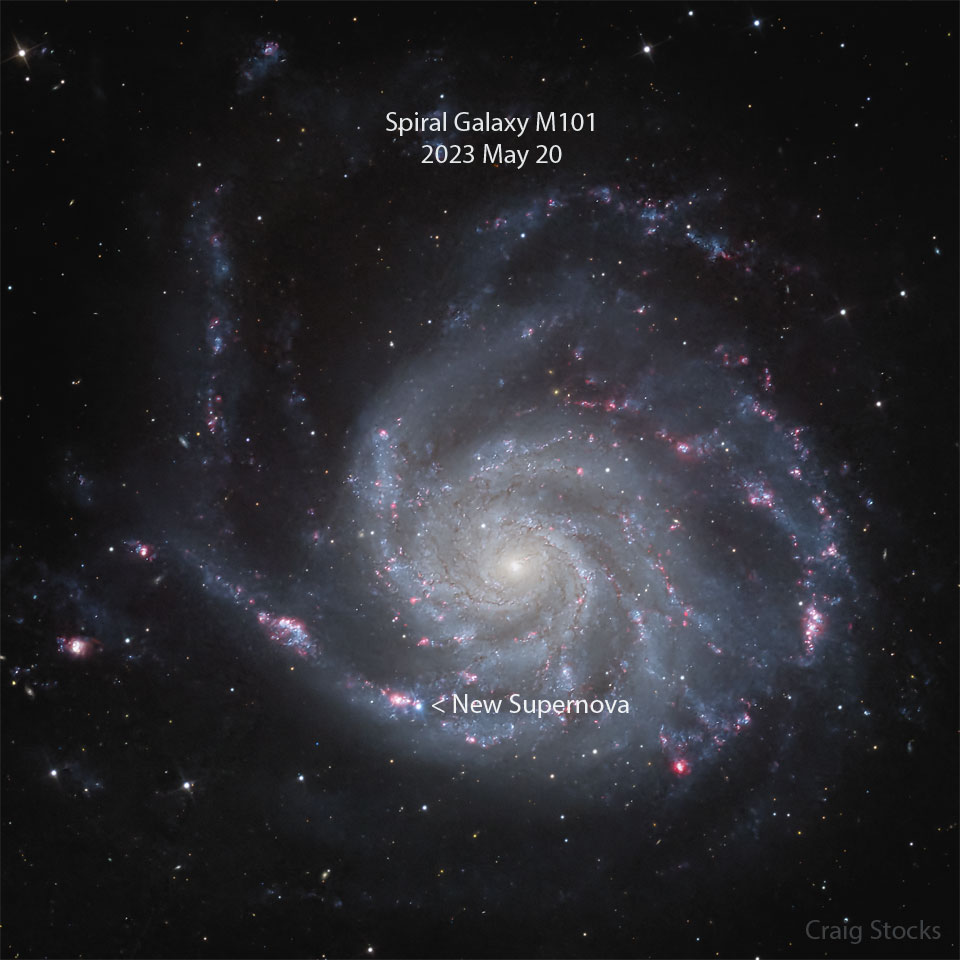A supernova has recently exploded in the arm of the Pinwheel Galaxy (M101). Its fiery agony, according to astronomers, can be observed for several more months even with the help of amateur telescopes.

The supernova, now designated as SN 2023ixf, was first seen by Koichi Itagaki from Japan on May 19. Stargazers at the Zwicky Transient Facility Observatory in California have confirmed a space explosion.
“We still do not know the nature of how the stars are beating in death convulsions on the eve of the explosion. It is very difficult to catch a star on the eve of a supernova flare, because most of them are very far away. This supernova SN 2023ixf will teach us a lot,” commented Andy Howell, a professor at the University of California at Santa Barbara and an astronomer at the Las Cumbres Observatory.
I have a history with supernovae in this galaxy. There was one in 2011, and we got two Nature papers out of it – it taught us a lot about Type Ia, or thermonuclear supernovae. Here’s an image we took with @LCO_Global that now shows up in textbooks. (Credit: BJ Fulton/LCO). pic.twitter.com/I3vWm70CWX
— Andy Howell (@d_a_howell) May 20, 2023
Features of a supernova explosion
Astronomers quickly determined that a space explosion was a Type II supernova, in which the core of a massive star suddenly collapsed when it ran out of fuel and could not resist its own gravity. The supernova’s home galaxy is relatively close – just 21 million light-years away. NASA claimed the explosion was “the closest supernova seen in the last five years”.
Because the supernova is relatively close and is young by cosmic standards, scientists are eager to study it, hoping that it can provide exciting new details about the evolution of massive stars and how they die.
Hatred to Starlink
Sky-watching astronomers also take the opportunity to complain that Elon Musk’s SpaceX satellites are clogging up the starry sky, which indicates an increasingly noticeable gap between the billionaire and the astronomical community.
“Nothing like a piece of Elon Musk space junk to ruin a livestack of a supernova image,” David Fuller tweeted, sharing an image of the Flywheel Galaxy and a supernova in which the bright path of the Starlink satellite distorts the image.
Nothing like a piece of Elon Musk space junk to ruin a livestack of a supernova image. pic.twitter.com/wtSqLzYPWF
— David Fuller (@astronomydave) May 24, 2023
Earlier we reported on how a supernova with an “incorrect” explosion was detected.
According to NASA
Follow us on Twitter to get the most interesting space news in time
https://twitter.com/ust_magazine

